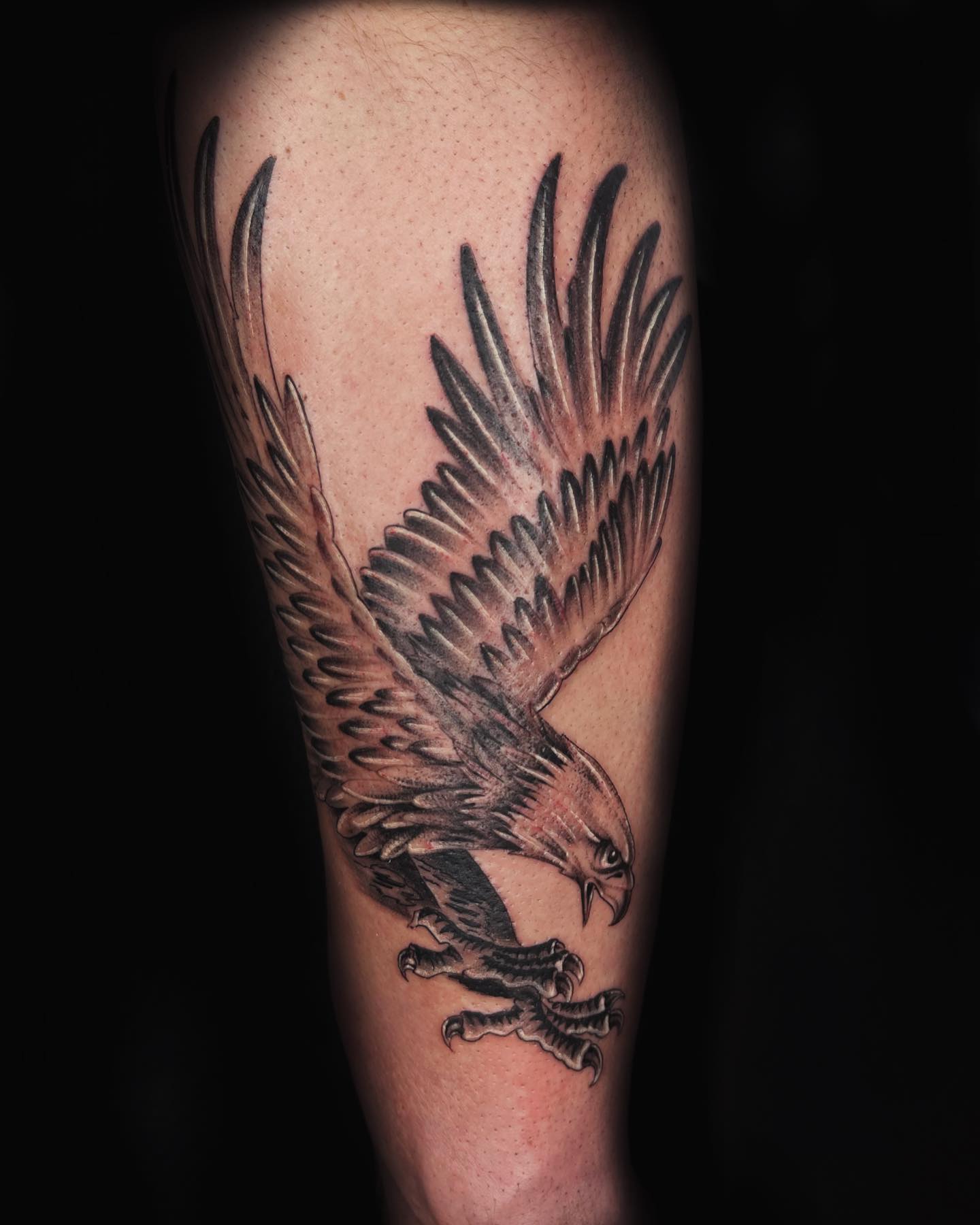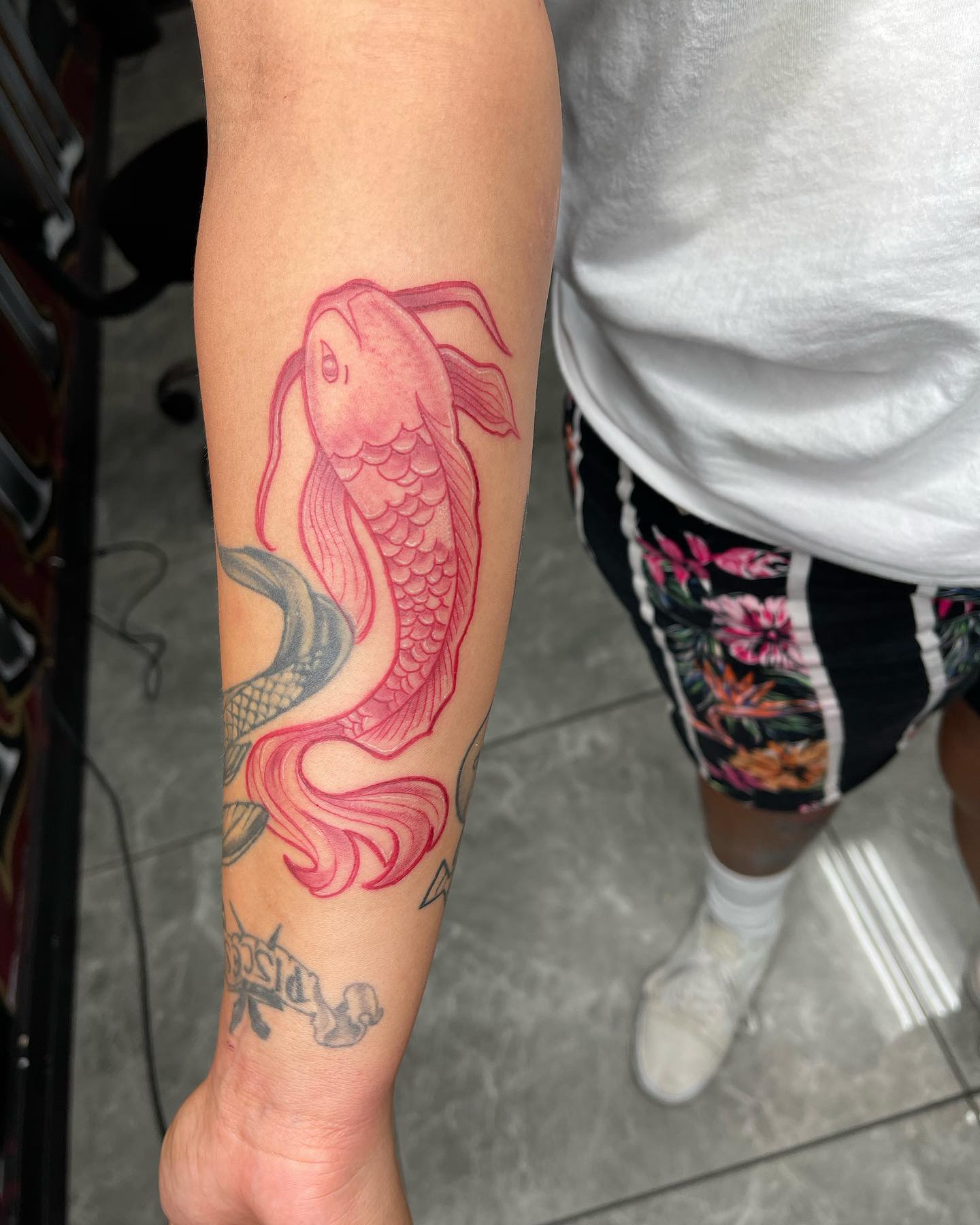May 18, 2024
Is Tattoo Pain Real or Just a Myth?
Busting the Truth Behind Getting Inked
Getting inked is an exciting step for many. However, one question that often looms large for veterans and newcomers alike is, "Does getting a tattoo hurt?" For tattoo enthusiasts and first-time clients, understanding the realities of tattoo pain can help ease their minds and prepare them for the experience.
Does Getting a Tattoo Hurt? Myths vs. Reality Let's debunk some common myths and lay out the real facts.
Understanding Tattoo Pain
How Tattoos Work
Understanding the tattooing process helps one comprehend tattoo pain. A tattoo machine uses a needle to inject ink into the dermis layer of the skin. This process involves thousands of tiny punctures, which can, understandably, cause discomfort. The depth and speed of the needle are crucial in determining the sensation experienced.
Pain Perception Factors
Pain is subjective. Some people find the experience uncomfortable but bearable, while others feel more intense discomfort. Several factors contribute to this perception:
Individual Pain Tolerance: Everyone's pain threshold varies. What feels like a minor pinch to one person might be more significant to another.
Psychological Factors: Anxiety and stress can heighten your pain sensitivity. Conversely, staying calm can help manage discomfort.
The Role of Adrenaline: During the initial minutes of tattooing, adrenaline may spike, temporarily relieving pain. However, this effect tends to wear off as the session progresses.
Common Myths About Tattoo Pain
Myth 1: Tattoos are Unbearably Painful
A widespread belief is that tattoos are excruciatingly painful. In reality, most people find the sensation tolerable and describe it as more of an annoyance than agony. While there's discomfort, it's often less intense than anticipated.
Myth 2: All Tattoos Hurt the Same Regardless of Placement
Pain levels differ depending on where on the body you get tattooed. Areas with less flesh and more nerve endings, like ribs or feet, tend to hurt more. Conversely, locations with more muscle or fat, such as the outer arm or calf, are generally less painful.
Myth 3: Bigger Tattoos Always Hurt More
The size of a tattoo doesn't necessarily dictate the level of pain. Instead, it's about duration and intensity. A small, intricate tattoo might take longer and be more uncomfortable than a larger, simpler one.
Myth 4: Numbing Creams Eliminate All Pain
Numbing creams can reduce discomfort, but don't remove it entirely. They dull the skin's surface but may not reach deeper nerve endings. Results vary, and effectiveness depends on individual tolerance.
The Reality of Tattoo Pain
Pain Levels by Body Part
Understanding which areas are more sensitive can help set realistic expectations:
Least Painful Areas: The outer arm, thigh, and calf are typically less sensitive and more manageable.
The most painful areas are the rib cage, armpits, and feet, which can be excruciating due to their proximity to bone and nerve endings.
Types of Pain Sensations
Tattoo pain isn't uniform; it manifests in different sensations:
Scratching: Many describe the feeling of a needle moving across the skin as a scratching sensation.
Burning: Particularly during shading, the skin may feel like it's burning.
Vibrating: Some body parts create a vibrating sensation, especially near bones.
Factors That Influence Tattoo Pain
Artist Technique
The skill and technique of your tattoo artist significantly impact your experience. A gentle touch and efficient technique can make a world of difference. Choosing an experienced artist is key to minimizing discomfort.
Tattoo Style
Different styles present varying levels of discomfort:
Line Work: Often less painful and quicker than shading or color work.
Shading: This can be more intense as it involves covering larger areas.
Color Packing: Requires multiple passes over the same area, which may increase pain.
Your Physical State
Your condition can affect your pain perception:
Rested and Nourished: Being well-rested and having eaten can improve your tolerance.
Tired and Hungry: Fatigue and hunger might make the experience harder to endure.
Tips to Manage and Reduce Pain
Before the Session
Preparation is key to a smoother experience:
Get a Good Night's Sleep: Rest to improve your threshold and mental state.
Eat a Healthy Meal: Fuel your body with nutrients for stamina.
Stay Hydrated: Proper hydration helps maintain energy levels.
During the Session
Maintaining focus and calm will benefit you:
Practice Deep Breathing: Helps manage anxiety and pain perception.
Bring Distractions: Music, podcasts, or conversations can divert your attention.
After the Session
Proper care ensures painless healing:
Follow Aftercare Instructions: Listen to your artist's guidance on caring for your new tattoo. See our recommended aftercare guide.
Use Recommended Healing Products: Moisturize and protect the area to avoid irritation.
Mental Preparation and Mindset
Understanding Fear vs. Reality
Anticipation often magnifies fear. Recognizing that the pain is usually bearable can help reduce anxiety.
Positive Visualization
Focus on the beautiful result awaiting you. Visualizing the finished artwork can motivate you to endure discomfort.
Communicating with Your Artist
Expressing concerns and asking for breaks is essential. A good artist will accommodate your needs and ensure you're comfortable.
Conclusion
Navigating the mystery surrounding tattoo pain is all about setting realistic expectations. By debunking myths and understanding reality, you empower yourself to make informed choices. Remember, while some discomfort is inevitable, most people find that the result outweighs the temporary pain. If you're ready for some ink, book a session with us at Grand Avenue Tattoo in Phoenix, AZ.
Our experienced artists will guide you through the process and ensure a positive experience.
FAQs
Do tattoos hurt more than injections or shots?
While both involve needles, tattoos engage the skin repeatedly, causing a different sensation. It's often more bearable than imagined.
Can I take painkillers before getting a tattoo?
Consult a doctor before taking any medications, as some painkillers can thin your blood and affect the process.
Is it normal to feel unwell after a tattoo session?
Mild dizziness or fatigue is common, but it should pass quickly. Stay hydrated and rest. Seek medical advice if symptoms persist.
How long does tattoo pain last after the session?
Initial soreness can last a day or two, with healing taking a few weeks. Follow aftercare instructions for a smooth recovery.
What if I'm still worried about the pain?
Communicate your concerns with your artist and prepare mentally. Most fears are alleviated once you start the process.
Can Numb Cream Be Used?
Numbing cream can be an option for those concerned about tattoo pain, though it has its limitations. These topical anesthetics temporarily dull the skin's surface, helping manage discomfort during tattooing. However, it's important to consult with your tattoo artist before using any numbing products.
Some artists have preferences or restrictions based on their experiences with how these creams can affect the skin's texture or the tattooing process. Moreover, numb creams typically do not reach deeper nerve endings, meaning some pain may still be experienced. As effectiveness can vary from one individual to another, it is advisable to discuss your options and any potential risks or benefits with both your artist and a healthcare professional.






